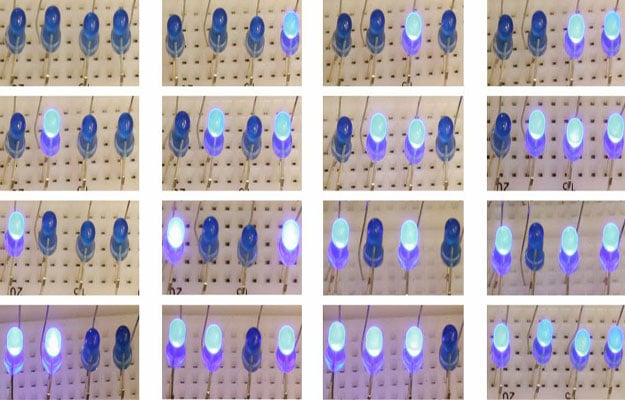Duke Researchers Develop Spray-On Printable Memory That Could Put Storage Virtually Anywhere
Digital storage could soon be as easy to print as paper. Duke University researchers have developed their own “spray-on” printable memory. This memory can placed onto the materials such as paper, plastic or fabric in order create programmable electronics.
Benjamin Wiley, an associate professor of chemistry at Duke and an author on the paper, remarked, “We have developed a way to make the entire device printable from solution, which is what you would want if you wanted to apply it to fabrics, RFID tags, curved and flexible substrates, or substrates that can’t sustain high heat”.

The “spray-on” digital memory is produced by an aerosol jet printer and nanoparticle inks. Most flash drives encode memory onto a series of silicon transistors. The silicon transistors can exist in both charged and uncharged states.
The nanoparticle ink is composed of silica-coated copper nanowires encased in a polymer matrix. This material encodes information in states of resistance that can be altered with the application of small voltages. The nanowires and polymer can also be dissolved into methanol and are therefore able to be sprayed through the nozzle of a printer.

The core of the new printed device is about the size of a postage stamp and similar to a 4-bit flash drive. As a demonstration, Duke graduate student Matthew Catenacci connected the device to a circuit with four LED lights on a board. The lights would switch between “states” or different patterns of light.
This is the first time a team has created printable memory that actually has a practical, affordable use. The “writespeed” is only three microseconds and tests have indicated that information can be stored on the device for up to ten years and restored without degradation. Although the “spray-on” digital memory is still tiny, its future applications could be huge, particularly with regards to storing information about various environments.
Benjamin Wiley, an associate professor of chemistry at Duke and an author on the paper, remarked, “We have developed a way to make the entire device printable from solution, which is what you would want if you wanted to apply it to fabrics, RFID tags, curved and flexible substrates, or substrates that can’t sustain high heat”.

The “spray-on” digital memory is produced by an aerosol jet printer and nanoparticle inks. Most flash drives encode memory onto a series of silicon transistors. The silicon transistors can exist in both charged and uncharged states.
The nanoparticle ink is composed of silica-coated copper nanowires encased in a polymer matrix. This material encodes information in states of resistance that can be altered with the application of small voltages. The nanowires and polymer can also be dissolved into methanol and are therefore able to be sprayed through the nozzle of a printer.

The core of the new printed device is about the size of a postage stamp and similar to a 4-bit flash drive. As a demonstration, Duke graduate student Matthew Catenacci connected the device to a circuit with four LED lights on a board. The lights would switch between “states” or different patterns of light.
This is the first time a team has created printable memory that actually has a practical, affordable use. The “writespeed” is only three microseconds and tests have indicated that information can be stored on the device for up to ten years and restored without degradation. Although the “spray-on” digital memory is still tiny, its future applications could be huge, particularly with regards to storing information about various environments.

